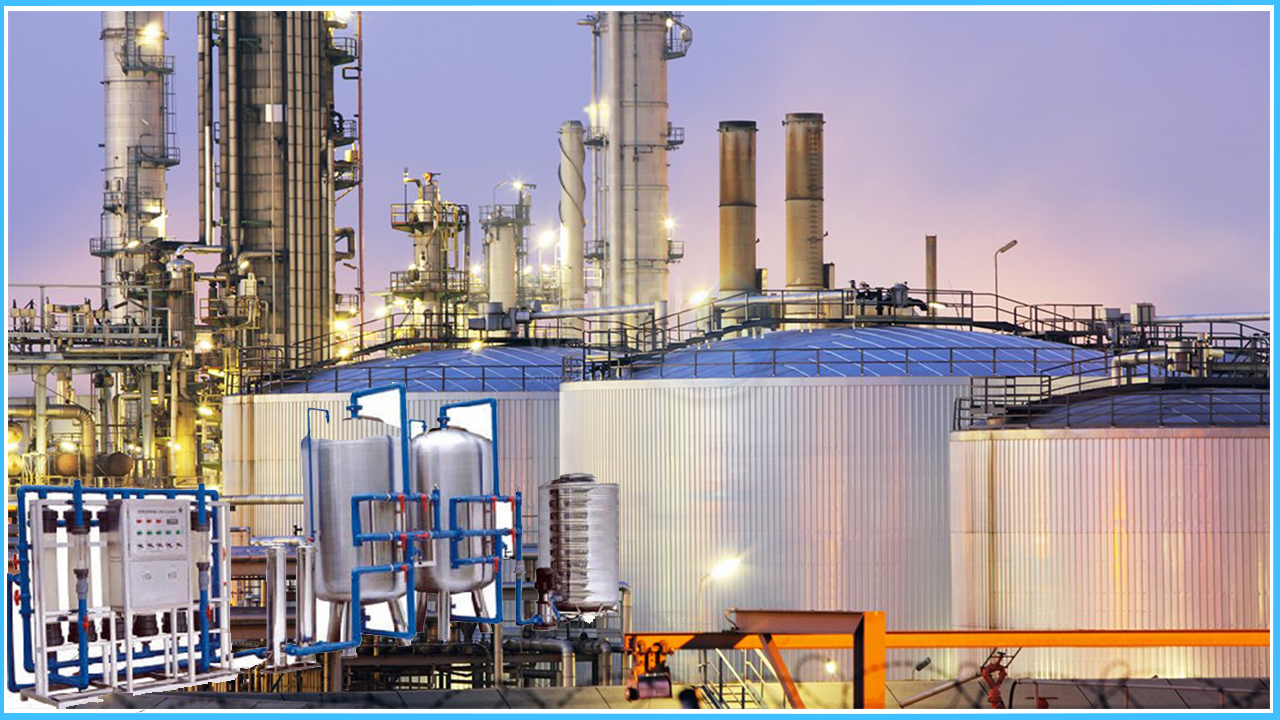Introduction of petroleum refinery in reverse osmosis
Prior to entering the opposite assimilation unit, the water pressure is expanded to around 300 psig in a refinery. Switch assimilation is essentially a subatomic-level filtration interaction. Water pressure forces water through a semi-porous film, impeding the section of the broken-up solids. The water containing the disintegrated solids, known as the concentrate, is removed from the unit and discarded. Prior to entering the boilers, the spotless water is passed through the zeolite conditioners for thorough cleaning.
To ensure effective execution, the opposite assimilation layers must be cleaned semi-annually and occasionally replaced.
The Refineries replace its hot lime conditioner, which removes hardness and alkalinity from kettle feed water, with a converse assimilation unit. The benefits of this substitution includes lower energy costs due to reduced heater blowdown requirements, as well as lower support costs due to the elimination of lime slurry and its associated cleaning and stopping issues. Another advantage is that no lime is disposed of, resulting in lower garbage removal costs. Minerals that occur naturally can foul the cylinders of steam boilers, resulting in decreased heater proficiency and run length. The evacuation of these minerals is critical for efficient evaporator activity.
WHAT ARE THE BENEFITS?
• Lower energy costs due to less heater blowdowns.
• Maintenance costs are lower.
• Waste disposal costs are lower.
STAGES OF HOT LIME SOFTENING
Ordinarily occurring minerals in the city water supply, such as calcium, magnesium, and silica, will generally accelerate out in the treatment facility's steam boilers, causing tube fouling and decreasing kettle productivity and run length. Expulsion of these minerals is required for competent kettle action.
- 1. Hot lime relaxing is a two-step procedure. In the first place, high-temperature city water is mixed with steam in the vessel's upper office. This interaction removes entrained oxygen from the water and preheats it to around 200° F, the temperature required to successfully respond with lime.
- 2. A lime slurry (calcium hydroxide) is circulated through the vessel's lower office, raising the pH of the boiling water to 10+. The calcium and carbonate alkalinity in city water react to frame calcium carbonate and encourage. The magnesium in the water reacts with the hydroxide, promoting the formation of magnesium hydroxide. Silica does not respond, but instead adsorbs on the other motivated solids and is removed with the blowdown. To flocculate (to form protuberances or masses of) the small particles and increase the settling rate, synthetic substances are added.
- 3. The treated water is then routed through a channel to remove any strong lingering contaminants. The excess hardness is removed from the water by passing it through a sodium zeolite gum conditioner. Hardness is removed by zeolite conditioners by exchanging calcium and magnesium particles from the water for sodium particles on the gum. The conditioners are periodically discharged with saltwater to dislodge calcium and magnesium particles and replace them with new sodium particles.
In the contrary assimilation measure, city water is first passed through two channels that contain a few layers of continuously better and denser material. The suspended matter in the water is removed during this filtration cycle.
To control the potential for silica to scale the converse assimilation layers and to eliminate any free chlorine that may harm the layers, synthetic substances are added to the water.




